â– Information Technology Revolution – the infrastructure that boosts the new economy: The outbreak of mobile information technology has laid the foundation for a new economic development. 3G communication technology promotes the rapid development of intelligent terminals, enabling us to acquire information in the ultimate in time and space. 4G communication technology has opened up a new era of mobile Internet industry chain, meeting people's learning, life, work and other aspects. The demand has greatly improved the user stickiness of smart terminals. Whether it is a smart phone hardware device or an application software platform, it is an important element of the new economy. It is an important product of the golden age of the Internet in the past decade, and it also provides a prerequisite for the future development of 5G. â– The mobile Internet dividend is coming to an end, and the 5G relay opens up a new economic space: the past decade is a decade of great development of the mobile Internet, but since the beginning of 17 years, the traffic dividend brought by 3G/4G has come to an end, and the market needs a new breakthrough. . A new hardware platform revolution brought about by new communication technologies is in sight. As the next generation of communication technology, 5G is at the key stage of development, and countries have also launched commercial timetables. Different from the lag in the 3G/4G era, China started earlier in 5G technology research. Both the government and enterprises have proposed to lead the world on 5G. We expect 5G to become the new engine of China's economy. By 2030, 5G will bring about 16.9 trillion economic output, 8 million jobs and 11 million indirect jobs. By enhancing the effective supply of information consumption and driving the “Internet +†related consumption, 5G will play an important role in expanding consumption and releasing domestic demand. â– The new economic potential of the 5G era conjecture: As the mobile Internet dividend brought by 3G/4G gradually weakens, the growth potential of the previous generation of hardware platforms such as smartphones and tablets has bottomed out. With the leapfrog development of 5G communication technology, intelligence The performance of terminal equipment will be further enhanced, and new technologies and new industries will be deeply integrated. A new generation of hardware platforms is expected to appear in people's lives. Here we make a bold prediction for the more potential areas: 5G technology can meet three major application scenarios, including enhanced mobile broadband (eMBB), massive machine-like communication (mMTC) and ultra-reliable low-latency communication (uRLLC) . Among them, enhanced mobile broadband will meet the application scenarios of GB/second communication and AR/VR, and ultra-high reliability and low-latency communication will be able to meet the special application requirements of the Internet of Vehicles, Industrial Internet of Things and other vertical industries; Application scenarios targeting sensing and data collection for smart cities, environmental monitoring, intelligent agriculture, and forest fire prevention. â– The future is here: 5G is setting up, the new economy will sing: By reviewing the development history of communication technology in the past, we have clearly found that communication technology is more like a “metro†or “bridge†of the new economy, constantly stimulating new industries and new The new mode of business, using new kinetic energy to promote new development, has accelerated the maturity of new economic industries such as the Internet of Things, AR/VR, industrial Internet, unmanned driving, and smart cities. The situation of 5G setting up a new economic singing scene may be about to begin, which deserves our continued attention. The text is written in the front : This article is the seventh in the series of new economic research of Anxin Strategy. In the study of the new economy, we are more and more aware of the tremendous changes brought about by the revolutionary technological breakthroughs to the economy and society. . This article is an industry article in the New Economic Research Series. We will focus on the next generation of information technology revolution: 5G technology, as an industry opportunity brought about by the foundation of new economic development. 1. Information Technology Revolution - Infrastructure to Boost New Economy Looking back at the development of human information technology, every technological breakthrough has brought about major changes in the economic industry. Take the breakthrough of mobile communication technology as an example: the first generation of mobile communication technology 1G brought us "big brother" and improved the convenience of communication; the second generation mobile communication technology 2G brought text messages and enriched the communication method. It has become a telecom operator and a traditional mobile phone manufacturer; 3G, a cellular mobile communication technology for high-speed data transmission, has brought the smartphone industry to take off, and the mobile Internet era has begun; the fourth-generation mobile communication technology 4G integrates 3G and WLAN. Leapfrogging has increased the speed of network transmission, and a series of emerging formats such as instant messaging, online shopping, mobile games, video, and sharing economy have flourished. The outbreak of mobile information technology has laid the foundation for the development of the new economy. 3G communication technology promotes the rapid development of intelligent terminals, enabling us to acquire information in the ultimate in time and space. 4G communication technology has opened up a new era of mobile Internet industry chain, meeting people's learning, life, work and other aspects. The demand has greatly improved the user stickiness of smart terminals. Whether it is a smart phone hardware device or an application software platform, it is an important element of the new economy. It is an important product of the golden age of the Internet in the past decade and provides a prerequisite for the future development of 5G. 1.1. 3G development brings smart hardware equipment chain prosperity The third generation mobile communication technology (3G) is a mobile communication system based on wideband CDMA technology and capable of simultaneously providing voice and data services, which is further developed on the basis of 2G. Its outstanding feature is that the personal terminal users can be realized globally. Communication and transmission between information is accomplished in any manner and with high quality at any time, anywhere and within any scope. 3G combines wireless communication with the Internet to provide tens of times or even hundreds of times higher transmission rate than GSM mobile communication, providing various information services such as web browsing, sending and receiving mail, video conferencing, e-commerce, etc., bringing unprecedented quality to consumers. The "mobile life" experience. January 7, 2009, the Ministry issued as China Mobile, China Telecom and China Unicom 600050, clinics shares for third generation mobile communication (3G) licenses, China Mobile to get TD-SCDMA license to China who will get CDMA2000 license, China Unicom obtained a WCDMA license. Thus, 2009 became China's 3G first year, and China officially entered the third generation mobile communication era. Compared with the European and American countries, the 3G experiment was started in early 2000. The entry time node in China is relatively late and is a follower's attitude. The issuance of 3G licenses led to the rapid development of 3G smart phones. In 2012, China's 3G mobile phone shipments exceeded 2G mobile phone shipments, and peaked in 2013, with shipments of 407 million units that year. However, with the launch of 4G, 3G mobile phones have gradually withdrawn from the smart phone market, and 2G mobile phones have been falling since 2011, and now maintain an annual shipment of 20 million units. From the perspective of the penetration rate of China's 3G network, from 2009 to 2014, this indicator has been showing an upward trend, reaching a peak in 2014, with a maximum penetration rate of 38%. 1.1.1. 3G subverts the mobile phone manufacturing industry The revolution in 3G communication technology has brought about the subversion of the entire mobile phone industry, and Nokia has handed over the position of the boss to Apple. Since 1996, Nokia's mobile phone business has won the first place in the global market for 15 consecutive years. In 2003, Nokia's classic model 1100 sold 200 million units worldwide. This mobile phone sales record is rapidly in the model today. It became an unreachable myth. In 2000, Nokia designed a touch-screen smartphone with only one button, which is capable of sending and receiving emails and playing games. However, Nokia’s prophetic vision did not bring more good luck to itself. The real turning point occurred in 2007, when Apple released the first iPhone, and the pattern of the entire mobile phone market began to change. Nokia continued to decline due to its inability to adapt to the era of smartphones that accompanied the revolution in 3G communication technology, and eventually abandoned the mobile phone business. In September 2013, it sold the mobile phone business and a basket of patents for a price of 5.44 billion euros to Microsoft. On June 9, 2008, Apple officially released the second generation iPhone, the iPhone 3G. Like its name, the iPhone 3G is a product of the 3G era . As the pioneer of smart phones, Apple has defeated the established mobile phone manufacturers such as Nokia and Motorola in this information technology revolution and has become the darling of the trend of the times. Apple has launched 15 smartphones in the following 10 years. Apple's influence has already surpassed the product itself, becoming the benchmark for industry development and leading the industry's future development trend. 1.1.2. The prosperity and prosperity of the domestic smart phone industry chain The development of 3G communication technology has led to the rapid development of smart phones , and the development of smart phones has promoted the prosperity of the entire smart device industry chain related to this. Simply put, the mobile phone industry chain includes displays, chips, cameras, PCBs (printed circuit boards), batteries, and enclosures. In addition, in recent years, smartphone-related technologies include comprehensive screens, OLED displays, 3D glass, zirconia ceramics, wireless charging, face recognition, fingerprint recognition, dual cameras, etc., each of which stands behind the hot words. A technical application of an industry. The range of radiation from the smartphone industry chain driven by 3G communication technology is not only very extensive, but also expanding. After the launch of the smart phone benchmark iPhone 4, 2011-2014 has also become a key time for the popularity of smart phones in China: the market share of smart phones in China was less than 16% at the beginning of 2011, as of March 2018. The market share of smartphones has reached 93%, which means that almost all people who can use smartphones are using smartphones, and their market coverage is close to saturation. In March 2014, the market share of smart phones in China has reached 91%. The rapid popularization and replacement of smart phones has brought about the vigorous development of the smart phone terminal industry chain, and has also contributed to the rise of related companies in the industry chain. A typical example is the song Seoul shares 002241 A shares of diagnostic technology shares and 002,456 Ophelia, attending shares, after the popularity of 3G, the market value of these companies there has been explosive growth, mainly because of the positive three areas: smart phone shipments The rapid growth of the quantity; the industrial chain moved from the United States, Japan and South Korea to the mainland; mobile phone update iterations brought new demands. 1.2. 4G opens the golden age of mobile internet 1.2.1. The departure of the domestic mobile Internet On December 4, 2013, the Ministry of Industry and Information Technology officially issued TD-LTE licenses to the three major operators, marking China's entry into the 4G era. The construction of 4G began in developed countries first, and the growth rate slowed down after 2013. The developing countries started to relay in 2013, and the network deployment volume increased rapidly. China's 4G construction also came to the fore: By the end of 16th, China Mobile (acquired TD license in December 13), the number of 4G base stations was 1.51 million; China Unicom and China Telecom (accepted FDD license in February 15) 4GW base stations were respectively 74,000 According to data released by the Ministry of Industry and Information Technology, in 2017, China's 4G base stations increased by 652,000, with a total of 3.28 million. If China's application of 3G is a breakthrough development, then on 4G, China has already synchronized with the world. The scale of China's mobile Internet users has also shown a rising trend. The number of mobile Internet users in China has increased from 233 million in 2009 to 753 million in 2017. At the same time, mobile Internet users accounted for 97.5% of the total Internet users. In line with this, the market scale of the mobile Internet has continued to grow. As of February 2018, China's mobile Internet access traffic has increased by 186.3% year-on-year. 1.2.2. Industry representative in the era of mobile internet â– Representatives of emerging industries in the era of mobile Internet: Mobile Games: It is also one of the most mature industries in the current mobile Internet business. It is divided into cooperation modes of “content development + agent distribution + platform operationâ€. The mobile game industry experienced explosive growth in 2013, and the growth rate of user scale and the growth rate of revenue scale reached its peak. According to statistics, in 2013, the number of users in China's mobile game market reached 310 million, accounting for 62.7% of the entire game market, and the growth rate was close to 250%. The income of mobile games was the first anti-super-end tour in 2016, reaching 116.12 billion yuan in 2017. , accounting for 60% of the entire game market. It can be seen that the changes in the network environment have already and will continue to have a profound impact on the game market in China. The scale of end-users and page-tour users has been replaced by mobile game users; the revenue scale of the game market has also increased significantly with the increase in the proportion of online payments. As a new industry representative in the mobile Internet era, mobile games have fully benefited from the popularity and development of 4G mobile communication technologies. This is the Tencent, Netease, Panax mutual entertainment 002555, changes in the market value of the mobile terminal gaming companies attending shares, palm interested in science and technology 300,315, stocks and other clinic is a typical example. Since the beginning of 4G popularization, the market value of mobile game companies has ushered in a small increase. â– Emerging industry representatives in the era of mobile Internet – mobile payment: 2013 is a year of rapid development of mobile payment in China. On the one hand, the introduction of relevant policies such as payment standards has created a benign competitive environment for the industry and ensured the healthy development of the industry. On the other hand, all parties in the industry chain have increased their investment and launched innovative products. According to the data, the transaction volume of the domestic third-party mobile payment market reached 1.22 trillion yuan in 2013, an increase of more than 700% year-on-year. By 2017, the scale of third-party mobile payment has reached 98 trillion yuan. In this process, the popularity of 4G has greatly promoted the development of mobile payment. The huge industrial chain structure of mobile payment also determines that the participants in the entire industry chain will be far more than the traditional electronic payment industry, from the upstream technology and Solution providers and equipment manufacturers to mobile payment companies, including telecom operators, third-party payment companies, bank card organizations, commercial banks, and downstream customers, will promote and benefit from the development of the overall industry. â– : 4G network speed is up to 100Mbps, which means that the bandwidth of 4G network can meet the high-definition, no-delay, non-cart mobile video, and the explosion of enterprise video and personal video real-time transmission demand is unstoppable. The video industry is divided into long video and short video. After years of fighting, the competition in the long video field is basically stable. It is mainly based on Tencent, iQiyi and Youku, and also includes second-line platforms such as LeTV, Mango TV and Sohu. Come, the short video derived from long video has also emerged rapidly: short video apps such as “beauty shootâ€, “second shoot†and “quick hand†have been released one after another, which has changed the past to upload text and pictures on Weibo and WeChat platforms. The main mode, while short video shooting requires more network traffic and traffic costs. According to the statistics of February 2018, the number of mobile users of the three major long videos is between 400 million and 500 million, and the performance of the fast video in the short video is quite experienced. The number of users has reached more than 200 million. . 2. Mobile Internet dividends come to an end, 5G relay opens new economic space 2.1. Mobile Internet Dividend Say Goodbye to Ten Years of Golden Period In the past ten years, the mobile Internet has been developing for ten years. On the hardware side, smart mobile devices have become popular. The high cost performance of domestic 3G mobile phones has helped the penetration rate of smart devices to increase rapidly. On the software side, WeChat has become the dominant mobile. APP, Taobao, Alipay, and iQiyi have also achieved great success. But since the beginning of 17 years, all kinds of signs seem to indicate that the traffic dividend brought by the mobile Internet has come to an end, and the market needs a new breakthrough. â– Smartphones and tablets are turning faster. After 2007, the popularity of smartphones with 3G and 4G networks has ushered in a golden age of development. As of the end of 2017, global smartphone shipments reached 1.472 billion units, and tablet shipments reached 164 million units. However, the year-on-year growth rate of smartphone shipments was only -0.07% in 2017, and tablet PCs year-on-year. The growth rate has been negative for three consecutive years since 2015. The 3C industry, represented by smartphones and tablets, has entered a period of stock competition. The dividend of the last wave of communication technology revolution has not been sustainable. â– The penetration rate of China's mobile Internet has peaked. According to the statistics of the China Internet Network Information Center, as of the end of 2017, the proportion of mobile Internet users in China has reached 97.5%, and almost everyone who can access the Internet is using mobile phones to access the Internet. From the second half of 2010 to 2013, the average online time of Chinese netizens increased from 18.3 hours per week to 25 hours, which reflects the convenience of “anytime, anywhere online†brought by smart phones. However, from 2014 to 2017, the average online time of Internet users in China is between 25 hours and 27 hours per week. The driving role of the mobile Internet in online time has been attenuated. From the perspective of the number of users of WeChat and QQ mobile APP, as of the end of 2017, the use of WeChat reached 895 million people, and the use of QQ reached 570 million people, but the growth rate was only 18% and 3%, which is also the history. The lowest point, which means that the use of mobile APP has covered most of the group, and the number of large-scale users will not increase. The unsustainability of the traffic dividend has been reflected. â– Internet companies from “competition†to “marriage mergerâ€. Although the innovation of the application side is still continuing, the strength is obviously insufficient, and many of them are the evolution of the original trend, for example, from mobile long video to short video, from the sharing economy to the development of shared bicycles, shared taxis, from online shopping to . On the other hand, the Internet giants began to burn money in order to seize market share in the early days, but they all went to the end of the merger and acquisition. This is also a major manifestation of the lack of growth in the market. Youku merged with potatoes, and the US and the public comment merged. The merger of 58 cities and the market, the merger of Didi and the fast, etc., both reflect the warmth of the group behind the Internet dividends, but also the concentrated performance of the Matthew effect. The mobile Internet industry dividend driven by the development of 3G/4G is fading, and the market needs to seek new breakthroughs. Throughout the development of the technological revolution, when the technology of a period reaches the extreme, it will certainly give birth to a new revolution. As the next generation of communication technology, 5G is at the key node of development, and countries have also launched commercial timetables. A new hardware platform revolution brought about by new communication technologies is in sight. 2.2. 5G is the trend of the times, China's development is at the right time In a research report released by its sponsored MWC 2018, GSMA pointed out that in the 2019, when 4G became the mainstream mobile communication technology, 5G will also be changed from the previous "test" to "commercial". From the progress of 5G layout in various countries, it is not difficult to find out the reasons for 5G commercial speedup. US FCC Chairman AJIT PAI gave a speech on "MWC2018" with the theme "What is the strategy for the US to lead the future of 5G?" 'The speech, from the low, medium and high frequency bands to the world to show the global plan to accelerate the 5G layout in the United States. European mainstream operators are becoming more active in their attitude towards 5G commercial use. The Orange Group took the lead in launching the 5G commercial plan in Europe on February 7th (5G commercial pilot next year and 5G mass commercial use in 2020). In mid-February, Swisscom announced that it will launch 3G commercial services in 3GPP standards in selected cities in Switzerland by the end of the year. This is more than a year ahead of its 5G commercial time node (2020) announced on November 8 last year. Based on the relatively lagging lessons of China's 3G and 4G technology development, we also recognize the important link between communication technology and China's economic development. China started early on 5G technology research and proposed to lead the world on 5G. As early as 2009, Huawei had already started early research on related technologies, and in the following years, it showed the 5G prototype base station to the outside world. "Made in China 2025" proposes to comprehensively break through 5G technology and vigorously promote the research and development of 5G technology products; "National "13th Five-Year Plan" proposes: actively promote 5G technology research, and launch 5G commercial in 2020. In 2013, the Ministry of Industry and Information Technology, the National Development and Reform Commission and the Ministry of Science and Technology organized the “IMT-2020 (5G) Promotion Group†(hereinafter referred to as the Promotion Group). The Promotion Group is responsible for coordinating and promoting the 5G technology R&D and testing work, and establishing 5G exchanges with countries such as Europe, America, Japan and Korea. Cooperation mechanism to promote the standardization and industrialization of global 5G. , China's 5G commercial speed-up planning is from top to bottom, reflected in the policy level and technical level. â– 5G first appeared in the government report to show strategic position The 18-year government work report of the two sessions pointed out: "To fully implement the strategic emerging industry development plan, accelerate the research and development and transformation of new materials, artificial intelligence, integrated circuits, bio-pharmaceuticals, fifth-generation mobile communications, and expand and strengthen industrial clusters." This is the first time that the government work report mentions 5G, which fully shows that 5G plays an important role in the future economy. â– China will issue 5G licenses simultaneously with the international On March 25, Wang Zhiqin, head of China's 5G promotion group, said that China will issue 5G licenses simultaneously with the international market. It is more appropriate to issue 5G licenses in the second half of 2019 to the first half of 2020. ZTE 000063, joint consultation shares of China Mobile Guangdong in Guangzhou successfully opened up the First Call based on 3GPP R15 standards, the official opening of 5G-end commercial systems scale field site (C114); by the end, the end of the third stage of the country measuring 5G , will form a 5G pre-commercial product. At "MWC 2018", China Telecomtsu announced the world's first 5G end-to-end OTA performance test system, which will help accelerate the development of 5G systems and the maturity of the 5G industry. It is expected that next year, 5G pre-commercial will be carried out. In view of the domestic market volume, it is actually equivalent to 5G commercial use. 2.3. 5G will become the new engine of China's economy â– 5G will drive trillions of economic output In terms of output scale, according to the formal commercialization of 5G in 2020, it is expected that direct output will be about 484 billion yuan in that year, and will increase to 3.3 trillion yuan and 6.3 trillion yuan in 2025 and 2030 respectively. The growth rate is 29%. In terms of indirect output, 5G is expected to drive 1.2 trillion, 6.3 trillion and 10.6 trillion yuan in 2020, 2025 and 2030, respectively, with an average compound annual growth rate of 24%. By 2030, 5G will bring about a total of 16.9 trillion economic output. From the output structure, the main source of direct output will shift as the 5G commercial phase progresses. In the early stage of 5G commercialization, operators started large-scale network construction. The main source of 5G direct economic output is the equipment manufacturer's revenue brought by 5G network equipment investment. It is estimated that the total revenue of network equipment and terminal equipment will reach about 450 billion yuan in 2020, accounting for direct 94% of total economic output. In the mid-term of 5G commercial use, terminal equipment expenditure and telecom service expenditures of users and other industries will continue to grow. It is estimated that by 2025, the above two expenditures will be 1.4 trillion and 0.7 trillion yuan respectively, accounting for 64% of the total direct economic output. In the middle and late stage of 5G commercialization, Internet companies and 5G-related information service revenues increased significantly and became the main source of direct output. It is estimated that in 2030, Internet information service revenue will reach 2.6 trillion yuan, accounting for 42% of the total direct economic output. â– 5G or create millions of jobs According to the calculation of the ICT, the official commercialization of 5G in 2020 will directly create about 540,000 jobs for the society, mainly in the 5G related equipment manufacturing industry. With the expansion of 5G applications and the deepening of application areas, about 3.5 million jobs will be created in 2025, mainly distributed in 5G related equipment manufacturing and telecom operations. In 2030, 5G will drive more than 8 million people to work, mainly created by telecom operators and Internet service companies. At the same time, through the related industries and the ripple effect, 5G is expected to indirectly create 1.3 million jobs for the society in 2020, which is 2.5 times that of direct employment. By 2030, 5G is expected to contribute 11.5 million indirect jobs. At the beginning of the 5G construction, it is expected that equipment manufacturers will directly drive about 510,000 jobs, accounting for 94% of the total employment. In 2025, with the wide application of 5G, mobile terminals are gradually popularized, driving the rapid development of related information services. It is expected that equipment manufacturers will directly drive about 1.8 million jobs, accounting for 52% of the total employment. At the same time, the employment of information service providers The driving role is gradually emerging, and it is expected to directly drive about 900,000 jobs, accounting for 27% of the total employment. In 2030, the economic and social driving effects of 5G will be fully manifested. The employment-driven effect of information services exceeds that of equipment manufacturing. It is expected that information service providers will create about 3.2 million jobs, accounting for 41% of the total number of employed people. Equipment manufacturers will drive the contract. 3.1 million people employed, accounting for 38% of the total employment. â– 5G will expand consumption and release domestic demand At present, China's final consumption contributes more than 60% to economic growth. Economic and social development has shifted to a new era of consumption-led growth. 5G plays an important role in expanding consumption and releasing domestic demand. There are two paths of influence: First, enhance information consumption. Effective supply . The application of 5G will promote the innovation of information products and services, enabling new information products such as smart homes and wearable devices, digital content services such as 8K video and virtual reality education systems to truly enter thousands of households, increasing the effective supply of information consumption and promoting The expansion and upgrading of information consumption will release the potential of domestic demand and drive economic growth. The second is to drive "Internet +" related consumption . 5G will be able to provide immersive interactive experiences in various areas such as people's residence, work, leisure and transportation, effectively promoting the development of vertical real-world applications such as virtual reality shopping and car networking, and making users' consumption behaviors break through time and space constraints. Realize the "consumption of free". Therefore, the application of 5G will effectively drive consumption in other fields. 3. Conjecture of new economic potential in the 5G era With the gradual weakening of the mobile Internet dividend brought by 3G/4G, the growth potential of the previous generation of hardware platforms such as smart phones and tablets has bottomed out. With the leapfrog development of 5G communication technology, a new generation of hardware platforms is expected to appear in people's lives. . In the 5G era, the performance of intelligent terminal equipment will be further enhanced, and new technologies and new industries will be deeply integrated, and a new generation of requirements will be created. We will make a bold prediction for the areas with great potential. 5G technology can meet three major application scenarios, including enhanced mobile broadband (eMBB), massive machine type communication (mMTC) and ultra-reliable low-latency communication (uRLLC). Among them, enhanced mobile broadband will meet the application scenarios of GB/second communication and AR/VR, and ultra-high reliability and low-latency communication will be able to meet the special application requirements of the Internet of Vehicles, Industrial Internet of Things and other vertical industries; Application scenarios targeting sensing and data collection for smart cities, environmental monitoring, intelligent agriculture, and forest fire prevention. 3.1. AR/VR: 5G power vision new experience AR (Augmented Reality) is a new technology that seamlessly interacts with real world information and virtual world information. VR (Virtual Reality) is a computer-generated, real-time dynamic The three-dimensional realistic image allows the user to experience the real scene immersively based on the Internet. As a transformative technology, AR/VR is booming. According to Digi-Capital, the 2016 VR/AR market revenue was approximately $3.9 billion, of which VR revenue was $2.7 billion and AR revenue was $1.2 billion. It is estimated that the AR user base in 2022 is expected to reach 3.5 billion, and the market size is about 85-90 billion US dollars; in 2022, the VR user base is expected to be about 50-60 million, and the market size is about 10-15 billion US dollars. Analysys expects that China's VR market is expected to reach 4.8 billion and 6.6 billion yuan in 2018 and 2019; the AR market is expected to reach 67.8 billion yuan and 118.7 billion yuan in 2019 and 2020, with broad prospects. However, the popularization of AR/VR is still facing many technical obstacles, taking VR as an example: The popularization of VR needs to solve the problem of "wireless" VR head display first. Early PC VR head-mounted devices needed to connect to the PC through the data cable, which limited the user's mobile space, and the user experience was poor, which could not achieve a true immersive experience. At present, manufacturers such as HTC Vive have introduced wireless adapters as a solution to provide users with short-range wireless transmission services, but there are still some shortcomings in wireless transmission bandwidth and network delay. â– 4G bandwidth is difficult to meet the bandwidth requirements of VR. A few seconds of high-definition panoramic VR video generally requires tens of megabytes of traffic, or even hundreds of megabytes. Under the existing 4G network speed, it is difficult to smoothly transmit VR content through wireless transmission. â– Network delay can cause “dizzinessâ€. When the VR experiencer makes an action, the entire system will have a certain delay lag from detecting the motion to reflecting the motion into the VR field of view, and the experiencer will have a "dizziness". Sensory discomfort in human-computer interaction brings a poor user experience. Ai Media Consulting's survey results in the first half of 2016 show that “dizziness†has become the most dissatisfied issue for VR users. The popularity of VR development also needs to solve the problem of VR hardware cost is too expensive. The initial retail price of Sony, Oculus, and HTC's flagship PC VR is $499/599/799, which is priced higher. At the same time, VR requires a large amount of data transmission, storage and computing functions. At present, the processing of these information is concentrated in the PC or in the head display, so the processing speed and capacity of the chip are highly demanded, and the cost of high-end CPU/GPU components is common. Higher. The high hardware cost has restricted the popularity of VR devices to some extent. So, what support will 5G technology provide for VR/AR? In the process of achieving wireless, the advantages of 5G are mainly reflected in higher bandwidth , lower latency and better network uniformity . In order to achieve ultra-high-performance games and modeling real-time rendering/downloading of VR applications, the bandwidth should reach 100Mbps~9.4Gbps, and the delay must be below 10ms. The 5G bandwidth is 1Gbps, and the peak value can reach 3.25Gbps, which meets or exceeds the real-time transmission rate requirement of HD VR. At the same time, the 5G air interface delay can reach 1ms, and the user's "dizziness" problem will naturally be solved. Cloud VR/AR will greatly reduce equipment costs and provide affordable prices for everyone. If you transfer a large number of complex and intensive computing tasks required by VR/AR to the cloud, you can take advantage of the cloud server's data storage and high-speed computing capabilities. Utilizing the high bandwidth and edge computing technologies of the 5G network, the content processed by the cloud can be transmitted to the VR head display through 5G. The VR head display only needs to complete the function of information transmission and decoding, which can greatly reduce the hardware cost of the head display. With the advent of the 5G high-bandwidth, low-latency era, more AR/VR application scenarios will become a reality in the future. The immersive interactive information created by the VR/AR mobile roaming immersive experience will replace text and images as the main information carrier for the next generation of social platforms. The industry chain of virtual reality terminals and chips has been formed, and successful application cases have appeared in application fields such as film, games, retail, real estate industry, and medical, education, architecture and engineering planning and design. In the future, with the rapid development of mobile communication technologies, various applications of virtual reality and augmented reality will rapidly migrate to the wireless network side, resulting in a huge potential user market and cost advantages of scale development, which will ultimately enhance people's production. And life experience. 3.2. Industrial Internet of Things: 5G Linked to Intelligent Manufacturing New Platform The Industrial Internet of Things (IIoT) is a flexible interconnection of manufacturing materials, on-demand execution of manufacturing processes, rational optimization of manufacturing processes, and manufacturing environment through network interconnection, data intercommunication and system interoperability of industrial resources. Quickly adapt to achieve efficient use of resources to build a service-driven new industrial ecosystem. The Industrial Internet of Things is the infrastructure that supports intelligent manufacturing . The Industrial Internet of Things exhibits six typical characteristics: intelligent sensing, ubiquitous connectivity, precision control, digital modeling, real-time analysis, and iterative optimization. With the popularity of the Internet of Things, Gartner predicts that global industrial IoT terminal spending will reach 451.7 billion US dollars by 2020, of which the industrial field will become the most widely used area of ​​IoT projects. The demand for China's industrial Internet of Things is also gradually increasing. According to estimates by China Investment Consulting, the scale of China's industrial Internet of Things reached 115.7 billion yuan in 2014. In 2015, the scale was close to 150 billion yuan, with a growth rate of 29%. By 2020, the industrial Internet of Things will account for 25% of the overall Internet of Things industry, with a scale of 450 billion yuan. In traditional mode, manufacturers rely on wired technology to connect applications. Wireless solutions such as Wi-Fi, Bluetooth and Wireless HART have also been established in the manufacturing floor in recent years, but these wireless solutions have limitations in terms of bandwidth, reliability and security. Industrial IoT has very strict requirements for future 5G network capabilities: ultra-high reliability, millisecond-level delay is used to ensure real-time production process control, and high-density terminal distribution reaches 10 to 100 sensors per square meter. â– Delay from 1ms to 100ms. From the 3D printing of fine real-time control, the 1ms demand of the textile industry, the 10ms demand of automobile production and industrial machinery and equipment manufacturing, to the 100ms demand of large petrochemical industry and food processing industry, the wireless network is extremely high. Delay demand. â– Rate at the Gbps level. Remote video control, VR/AR based operations, and artificial intelligence applications impose Gbps rate requirements on 5G bandwidth. â– Self-integration, self-configuration, self-planning capabilities. Fully connected pipeline and production chain expansion, IoT communication node downtime reset, fault link backup and other scenarios, proposed for network self-organization (SON) capabilities and Plug and Play synergy Higher requirements. The industrial Internet of Things utilizes the connectivity of 5G mobile networks to more rationally deploy and utilize supply chain resources to significantly increase production efficiency. But this is only the initial stage of development of the information transformation of manufacturing. 5G will lead to changes in production, sales and business models while improving the productivity of the company. â– Personalized production will become a high-end service, forming a differentiated competitiveness. End-to-end lifecycle management visible to consumers through networking, product design and production can be customized on demand, thereby enhancing the company's differentiated competitiveness. â– The product itself is the channel, which will save the enterprise the cost of the intermediate channel. The revolutionary significance of products with networking capabilities is that they extend the value boundary of the product "box" itself through the connection. The product itself is the channel, which enables the company to directly target the final consumer and reduce the intermediate channel. â– A business model that charges for value-added services that extend to products becomes possible.产å“具备通信è”网能力,被连接入网的产å“作为数æ®é‡‡é›†ç«¯æ”¶é›†ç”¨æˆ·æ•°æ®å’ŒçŠ¶æ€å¹¶ä¸Šä¼ ç»™ä¼ä¸šï¼Œä»Žè€Œäº§ç”Ÿäº†å‘æœåŠ¡æ”¶è´¹çš„新的商业模å¼ã€‚通过延伸的增值æœåŠ¡ï¼Œäº§å“ä»·å€¼å¹¶æœªå› é”€å”®åŠ¨ä½œçš„å®Œæˆè€Œç»ˆæ¢ï¼Œå¢žå€¼æœåŠ¡å°†åœ¨æœªæ¥çš„价值链ä¸è´¡çŒ®æ›´å¤šçš„收入比é‡ï¼Œç”šè‡³è¿œè¶…过产å“本身。 在5G环境下,工业物è”网的应用场景包括增强移动宽带(eMBBï¼‰åœºæ™¯ä¸‹çš„æ— çº¿å·¥ä¸šç›¸æœºã€å·¥ä¸šä¼ 感器ã€è¿œç¨‹æŽ§åˆ¶ä»¥åŠè¾¹ç¼˜è®¡ç®—分æžï¼›æµ·é‡æœºå™¨ç±»é€šä¿¡ï¼ˆmMTC)场景下的状æ€ç›‘控ã€èµ„产跟踪ã€äº‘化AGVåŠç‰©æµä¸Žåº“å˜ç›‘控;以åŠè¶…高å¯é 低时延通信(uRLLCï¼‰åœºæ™¯ä¸‹çš„æ— çº¿äº‘åŒ–PLC和机器人300024, 诊股 åŒæ¥ï¼Œç‰ç‰ã€‚ 5Gå¯¹åˆ¶é€ ä¸šçš„çœŸæ£æ„义是通过å‰æ‰€æœªæœ‰çš„连接能力支撑了ä¼ä¸šç”Ÿäº§ã€é”€å”®ã€å•†ä¸šæ¨¡å¼çš„æ ¹æœ¬å˜é©ï¼Œå¹¶æœ€ç»ˆç»™åˆ¶é€ 业和消费者用户带æ¥æ›´å¤šçš„收益 。 截至2017 年底,全çƒæœ‰1800万个状æ€ç›‘测连接,2025年将上å‡åˆ°8800万个。全çƒå·¥ä¸šæœºå™¨äººçš„出货é‡ä¹Ÿå°†ä»Ž36万å°å¢žåŠ 到105万å°ã€‚æ®åŽä¸ºWirelessXLabs的分æžï¼Œé¢„计到2020年,全çƒåˆ¶é€ 业的连接数将达125亿,工厂网络的市场规模接近500亿美元。伴éšæˆ‘å›½åŠ å¿«å®žæ–½åˆ¶é€ å¼ºå›½æˆ˜ç•¥ï¼ŒæŽ¨è¿›æ™ºèƒ½åˆ¶é€ å‘展,5G将广泛深入应用于工业领域,预计到2030年,我国工业领域ä¸5G相关投入(通信设备和通信æœåŠ¡ï¼‰çº¦è¾¾2000亿元。 3.3. 车è”网:5G让智能驾驶走进生活 车è”网(Vehicle-to-Everything,V2X)是以车内网ã€è½¦é™…网和车载移动互è”网为基础,在车车ã€è½¦è·¯ã€è½¦äººã€è½¦ç½‘ä¹‹é—´ï¼Œè¿›è¡Œæ— çº¿é€šè®¯å’Œä¿¡æ¯äº¤æ¢çš„大系统网络,是能够实现智能化交通管ç†ã€æ™ºèƒ½åŠ¨æ€ä¿¡æ¯æœåŠ¡å’Œè½¦è¾†æ™ºèƒ½åŒ–控制的一体化网络,是物è”网技术在交通系统领域的典型应用。 车è”网对于ä¿éšœäº¤é€šå®‰å…¨ï¼Œå‡å°‘äº¤é€šæ‹¥å µå¹¶å®žçŽ°æ±½è½¦èƒ½è€—èŠ‚èƒ½å’Œé™ä½Žæ±¡æŸ“排放具有é‡è¦æ„义。麦肯锡报告显示,车è”网与智能驾驶å¯ä½¿äº¤é€šæ‹¥å µå‡å°‘60%,使现有é“路网的通行能力æ高2~3å€ã€‚é™ä½Žèƒ½è€—æ–¹é¢ï¼Œåœè½¦æ¬¡æ•°å¯å‡å°‘30%,行车时间é™ä½Ž13%至45%,实现é™ä½Žæ²¹è€—15%。安全ã€é«˜æ•ˆçš„行车体验,将带动车è”网市场空间快速增长。埃森哲预计,è”网的新车销é‡æ£åœ¨ä¸æ–æå‡ï¼Œåˆ°2025年将实现100%的新车都具备è”网功能,全çƒè½¦è”网市场总é¢å°†é«˜è¾¾8300多亿美元。其ä¸ï¼Œæ ¹æ®Navigant Research的估算,到2035å¹´å…¨çƒæ— 人驾驶汽车销é‡å°†è¾¾åˆ°9500万辆。 éšç€è½¦è”网和智能驾驶技术的快速å‘展,对车辆行驶数æ®é‡‡é›†ã€å¤„ç†å’Œäº¤äº’控制的è¦æ±‚越æ¥è¶Šé«˜ã€‚从最åˆæ供辅助驾驶系统到最终实现全自动驾驶,车è”ç½‘å¯¹ä¼ è¾“æ—¶å»¶å’Œé€ŸçŽ‡çš„è¦æ±‚ä¹Ÿæ›´åŠ ä¸¥æ ¼ã€‚å½“å‰V2X的通信方å¼ä¸»è¦æ˜¯çŸè·ç¦»ç»„网和蜂çªé€šä¿¡ä¸¤ç§ã€‚ç›®å‰çš„çŸè·ç¦»æ— 线组网技术在ç†æƒ³ä¼ æ’环境ä¸è¿›è¡Œå°èŒƒå›´åŒºåŸŸé€šä¿¡ï¼Œä½†åœ¨ä¼ æ’环境ä¸ç†æƒ³ã€è·¯å†µå¤æ‚çš„éžè§†è·é€šä¿¡åœºæ™¯ä¸ï¼Œå¾ˆéš¾åŠæ—¶èŽ·å¾—广覆盖的全景交通信æ¯å¿«é€Ÿåšå‡ºé¢„è¦å’Œé˜²æ’žå¤„ç†ã€‚特别是在高速移动场景ä¸ï¼Œè¡Œé©¶è½¦è¾†å¯¹éšœç¢ç‰©å¹²æ‰°ã€é¢‘率å移和å°åŒºé—´åˆ‡æ¢çš„å½±å“éžå¸¸æ•æ„Ÿï¼Œ 现有的çŸè·ç¦»ç»„网技术的应用范围有é™ï¼Œèœ‚çªç»„ç½‘çš„ä¼ æ’路径将æˆä¸ºä¸å¯ç¼ºå¤±çš„è¿žæŽ¥é€šé“ ï¼Œå¾—ä»¥æ»¡è¶³æ™ºèƒ½é©¾é©¶å®‰å…¨å¯é 的通信需求。 超低时延ã€é«˜å¯é 性åŠæ™®åŠæ˜“用ç‰5G的关键特性对自动驾驶汽车的æˆåŠŸè‡³å…³é‡è¦ ,5Gæˆç†ŸæœŸï¼ˆRel16æ ‡å‡†ä¸‹ï¼‰è½¦è”之间的互è”çš„åžå率ã€æ—¶å»¶ã€å¯é 性ç‰æŒ‡æ ‡å‡é«˜äºŽ4GåŠ5G早期(Rel15æ ‡å‡†ä¸‹ï¼‰ï¼Œå°†æŽ¨åŠ¨æ™ºèƒ½é©¾é©¶é€æ¸ç”±é©¾é©¶è¾…助å‘自动驾驶é 近。 5Gç½‘ç»œä»Žæ ‡å‡†åŒ–å®šä¹‰çš„åˆå§‹é˜¶æ®µï¼Œå·²ç»æŠŠè½¦è”网行业的通信需求考虑在内,以é¢å‘未æ¥çš„业务需求为ä¸å¿ƒè¿›è¡Œç½‘络架构的设计。借助于5G网络的商用部署,自动驾驶有望在2025年进入市场推广阶段,实现利用技术创新æ¥é©±åŠ¨äººã€è½¦å’ŒçŽ¯å¢ƒçš„å’Œè°ç»Ÿä¸€çš„ç›®æ ‡ã€‚æ ¹æ®ABI Research预测,到2025å¹´5G连接的汽车将达到5030万辆。汽车的典型æ¢ä»£å‘¨æœŸæ˜¯7到10å¹´ï¼Œå› æ¤è”网汽车将在2025~2030å¹´ä¹‹é—´å¤§å¹…å¢žé•¿ã€‚æ ¹æ®ä¿¡é€šé™¢æµ‹ç®—,到2030年,我国车è”网行业ä¸5G相关投入(通信设备和通信æœåŠ¡ï¼‰å¤§çº¦120亿元左å³ã€‚ 3.4. 智慧城市:5G实现城市å‘展智慧化 智慧城市以互è”网ã€äº‘计算ã€ç‰©è”网ã€3S(RSã€GISã€GPS)ç‰æ–°ä¸€ä»£ä¿¡æ¯æŠ€æœ¯ä¸ºæ”¯æ’‘,致力于城市å‘展的智慧化,使城市具有智慧感知ã€å应ã€è°ƒæŽ§èƒ½åŠ›ï¼Œå®žçŽ°åŸŽå¸‚çš„å¯æŒç»å‘å±•ã€‚å…¶ç›®æ ‡åœ¨äºŽä»¥æ™ºæ…§çš„ç†å¿µè§„划城市,以智慧的方å¼å»ºè®¾åŸŽå¸‚,以智慧的手段管ç†åŸŽå¸‚,用智慧的方å¼å‘展城市,从而æ高城市空间的å¯è¾¾æ€§ï¼Œä½¿åŸŽå¸‚æ›´åŠ å…·æœ‰æ´»åŠ›å’Œå‘展潜力。5G使万物互è”æˆä¸ºå¯èƒ½ï¼ŒåŠ©æŽ¨æ™ºæ…§äº¤é€šã€æ™ºæ…§å®‰é˜²ã€æ™ºæ…§ç”µç½‘ç‰ç‰åº”用场景æˆä¸ºçŽ°å®žï¼Œä»Žè€Œä½¿æ™ºæ…§åŸŽå¸‚的建设æ¥å…¥å´æ–°çš„阶段。 ■智能电网 智能电网(smart grid)åˆç§°ç”µç½‘2. 0,利用信æ¯ã€é€šä¿¡ã€æŽ§åˆ¶ç‰æŠ€æœ¯ä¸Žä¼ 统电力系统相èžåˆï¼Œå¯ä»¥å¸®åŠ©æ›´å¥½çš„检测能æºæ¶ˆè€—,预测应用需求,支æŒè´Ÿè½½å¹³è¡¡ï¼Œå‡å°‘用电高峰和åœç”µã€ç»´ä¿®æ—¶é—´ï¼Œä»Žè€Œé™ä½Žèƒ½æºæˆæœ¬ï¼Œæ高能æºè¾“é€å’Œä½¿ç”¨æ•ˆçŽ‡ï¼Œå¢žå¼ºç”µç½‘è¿è¡Œçš„安全性ã€å¯é 性和çµæ´»æ€§ï¼Œå®žçŽ°ç”µç½‘与用户的åŒå‘互动。智能电网在全çƒå·²ç»é€æ¥æˆä¸ºå›½å®¶å±‚é¢çš„战略,被视为国家能æºå’Œç»æµŽæ”¿ç–çš„é‡è¦ç»„æˆéƒ¨åˆ†ã€‚ 5G网络技术具有超大带宽ã€éžè§†è·ä¼ 输ã€å¹¿åŸŸæ— ç¼è¦†ç›–和漫游ç‰ä¼˜ç‚¹ï¼Œä¼˜ç§€çš„整体组åˆæ€§èƒ½å¯ä»¥æ»¡è¶³æœªæ¥æ™ºèƒ½ç”µç½‘çš„å¤šæ ·åŒ–éœ€æ±‚ï¼Œæœ‰æ•ˆä¿éšœé«˜å¯é ã€é«˜å¸¦å®½åŠæ™ºèƒ½ç½‘络的å¥å£®æ€§ã€‚ Gbpsçº§åˆ«çš„é€ŸçŽ‡ï¼šä¸»å¹²è¾“ç”µç½‘çš„ä¼ è¾“å¸¦å®½è¾¾åˆ°Gbpsæˆ–æ›´é«˜ï¼Œæ»¡è¶³æŽ¥å…¥ä¼ è¾“ç½‘æ•°é‡åºžå¤§çš„å˜ç”µç«™å’ŒæŽ§åˆ¶ä¸å¿ƒçš„带宽è¦æ±‚。通常,æ¯ä¸ªæ™ºèƒ½å˜ç”µç«™çš„带宽需求为0.2~1.0Mbps,æ¯ç™¾ä¸‡æ•°å—电表的带宽需求为1.85~2.0Mbit/s,æ¯ä¸‡ä¸ªæ™ºèƒ½ä¼ 感器的带宽需求为0.5~4.75Gbit/s。çµæ´»ã€å…¼å®¹ã€å¯æ‰©å±•æ€§ï¼šæ™ºèƒ½ç”µç½‘å› è§„æ¨¡æ‰©å¤§ä»¥åŠåˆ†å¸ƒå¼èƒ½æºæŽ¥å…¥ç‰å› ç´ ï¼Œåœ¨ä¿è¯ä¼ 统集ä¸å¼å¤§ç”µæºæ£å¸¸æŽ¥å…¥çš„åŒæ—¶èƒ½å…¼å®¹å¤ªé˜³èƒ½000591, 诊股 ã€é£Žèƒ½ç‰åˆ†å¸ƒå¼æ–°åž‹èƒ½æºçš„接入。 ■智慧安防 公共安全是智慧城市的é‡è¦çŽ¯èŠ‚,背åŽçš„创新驱动力在于å¯æŽ§çš„å¹¿æ³›çš„æ— çº¿è¿žæŽ¥ã€‚ä½œä¸ºåŸŽå¸‚å®‰å…¨è§£å†³æ–¹æ¡ˆçš„ä¸€éƒ¨åˆ†ï¼ŒåŸŽå¸‚æ— çº¿è§†é¢‘ç›‘æŽ§å¯¹äºŽæ高城市的公共安全有é‡è¦æ„义。 ä½¿ç”¨æ— çº¿ç›‘æŽ§æ‘„åƒå¤´å°†éœ€è¦5G增强型移动宽带特性æ供的功能。目å‰ä¸»å¯¼å¸‚场的是4Måƒç´ ã€6Måƒç´ å’Œ8Måƒç´ çš„IPæ‘„åƒå¤´ï¼Œåœ¨5G时代,4K分辨率的监控摄åƒå°†èŽ·å¾—技术支æŒã€‚å•ä¸ªæ— 线摄åƒæœºç›®å‰ä¸æ¶ˆè€—太多的带宽,但éšç€äº‘和移动边缘计算的推出,电信云计算基础设施å¯ä»¥æ”¯æŒæ›´å¤šçš„人工智能辅助监控应用,摄åƒæœºåˆ™éœ€è¦7×24å°æ—¶ä¸é—´æ–地进行视频采集以支æŒè¿™äº›åº”用,对数æ®é€ŸçŽ‡æ出了更高的è¦æ±‚。 é™¤äº†åœ¨å…¬å…±å®‰å…¨é¢†åŸŸå¤–ï¼Œæ— çº¿è§†é¢‘ç›‘æŽ§è¿˜èƒ½å¤Ÿæ‹“å±•æ›´å¤šæœ‰ç”¨çš„åº”ç”¨åœºæ™¯ï¼Œä¾‹å¦‚äº¤é€šç®¡ç†ã€‚污染监控ã€åœè½¦ç›‘控ã€æ°”象监控ç‰ç‰ã€‚预计在2017年,éžæ¶ˆè´¹è€…视频监控市场的增值æœåŠ¡æ”¶å…¥ä¸º120亿美元,到2025年预计将增长至210亿美元。 4. 未æ¥å·²è‡³ï¼š5Gæ£æå°ï¼Œæ–°ç»æµŽå°†å”±æˆ 回顾历å²ï¼Œæ¯ä¸€è½®ä¿¡æ¯æŠ€æœ¯çš„å˜é©éƒ½å¸¦æ¥äº†é€šä¿¡äº§ä¸šçš„æžå¤§å‘å±•ï¼Œæ›´åˆ›é€ äº†æ–°äº§å“新需求,æˆä¸ºæ–°ç»æµŽå‘展的技术基础和内生动力。展望今æœï¼Œ5G时代的脚æ¥å·²ç»ä¸´è¿‘,市场对于新一代通讯技术充满关注与期待。5G的高速率ã€ä½Žå»¶æ—¶ã€å¤§å®¹é‡ç‰æŠ€æœ¯ä¼˜åŠ¿å†³å®šäº†å…¶å…‰æ˜Žå‰æ™¯ï¼Œå›½å†…外è¿è¥å•†å’Œè®¾å¤‡å•†å·¨å¤§çš„投入也预示ç€å…¶è¿›ç¨‹è¶…出预期。在17å¹´åˆï¼Œæˆ‘们就明确表示看好5G产业链,虽然近期由于“ä¸å…´äº‹ä»¶â€ï¼Œè®©ä¸å›½çš„5Gå‘展进程在çŸæœŸæŠ¹ä¸Šäº†ä¸€å±‚阴影,但是从事件本身æ¥çœ‹é—®é¢˜æ›´å¤šæ˜¯æºè‡ªäºŽå…¬å¸æ²»ç†ï¼Œå¹¶ä¸èƒ½æƒ…绪化得将整个5G产业一æ£å打æ»ï¼Œä»Žç›®å‰ä¸‰å¤§è¿è¥å•†çš„进展æ¥çœ‹ï¼Œ5G的试验和部署ä¾ç„¶æ¥æ¥ä¸ºè¥ã€‚时隔一年,我们也å†æ¬¡æ€è€ƒ5G对于投资到底还有ç€æ€Žæ ·çš„价值,通过回顾历代通信技术的å‘展历程,我们清晰地å‘现通信技术其实更åƒæ˜¯æ–°ç»æµŽçš„“地é“â€æˆ–者“桥æ¢â€ï¼Œä¸æ–催生新产业新业æ€æ–°æ¨¡å¼ï¼Œç”¨æ–°åŠ¨èƒ½æŽ¨åŠ¨æ–°å‘展,使得物è”网ã€AR/VRã€å·¥ä¸šäº’è”网ã€æ— 人驾驶ã€æ™ºæ…§åŸŽå¸‚ç‰æ–°ç»æµŽäº§ä¸šåŠ 速æˆç†Ÿã€‚5Gæå°æ–°ç»æµŽå”±æˆçš„å±€é¢æˆ–许å³å°†å¼€å§‹ï¼Œå€¼å¾—我们继ç»é‡è§†ã€‚ ■风险æ示:1ã€ä¸ç¾Žè´¸æ˜“摩擦影å“ä¸å›½5G部署进度;2ã€5G未能刺激新硬件平å°å‘展。 Carbon Fiber Plates,Cfrp Plates,Plate Carbon Fiber,Carbon Fiber Shank Plate Jiangyin Phecda New Material Technology Co., Ltd , https://www.jiangyinphecda.com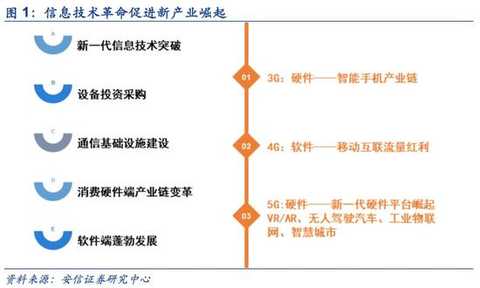
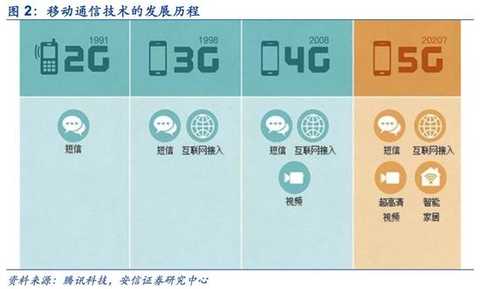
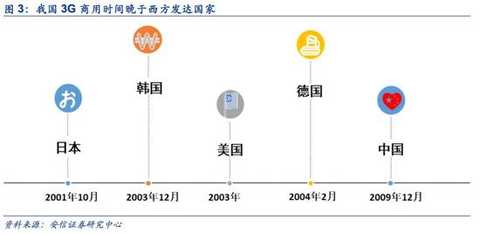
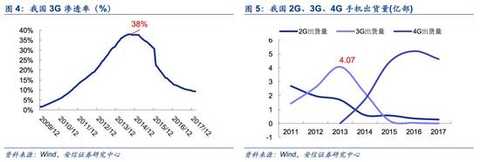
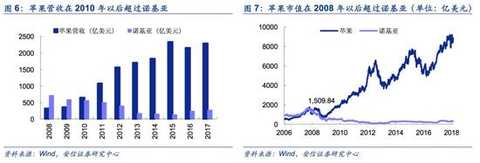

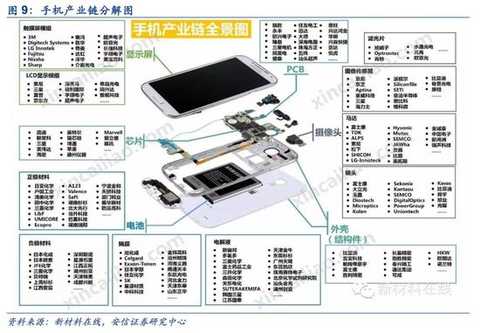
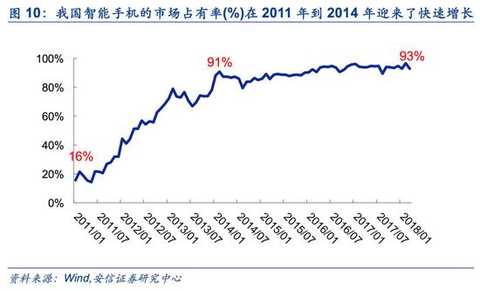
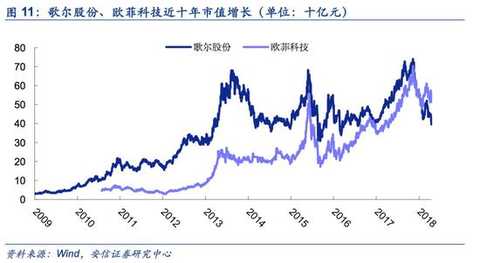
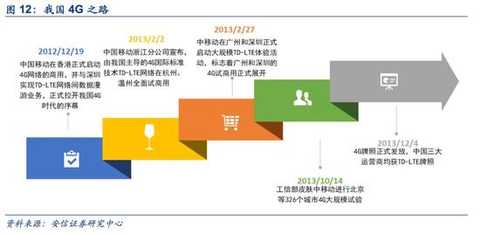

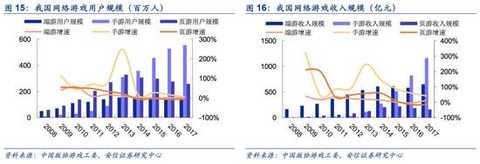
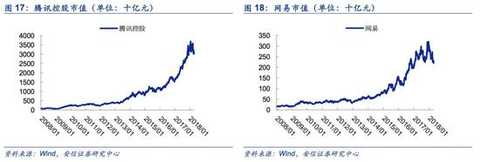
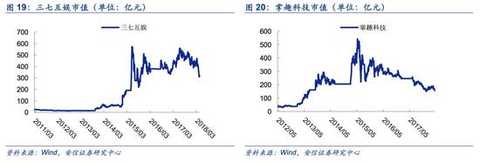
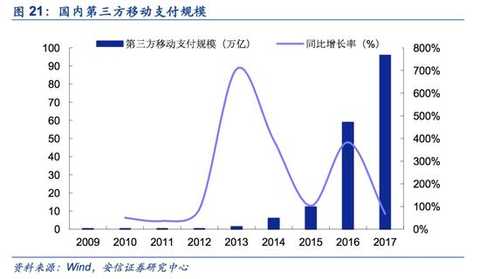
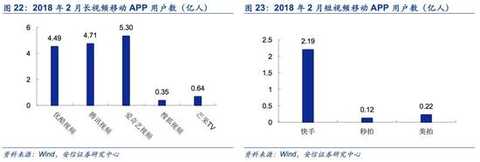

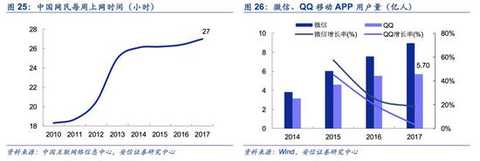
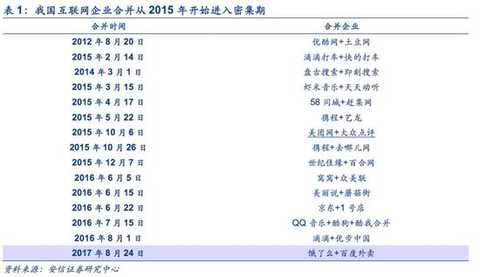
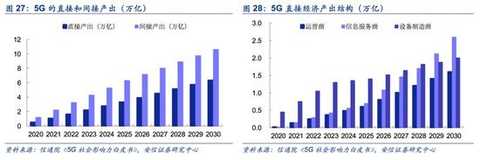

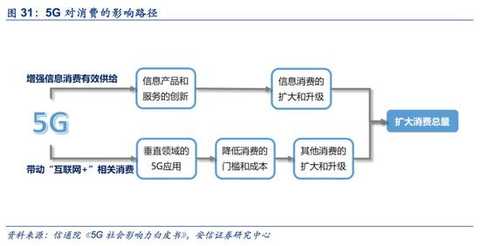
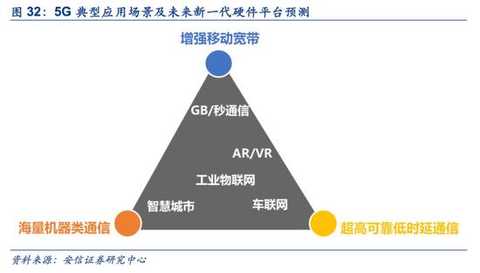
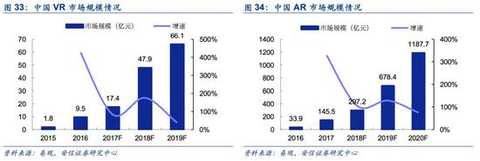
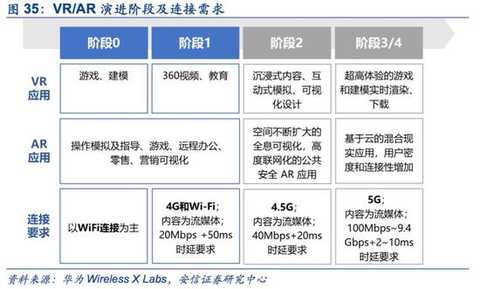
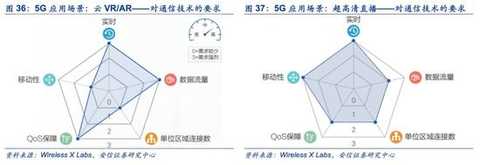
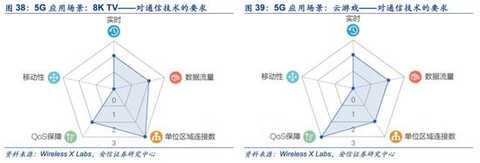
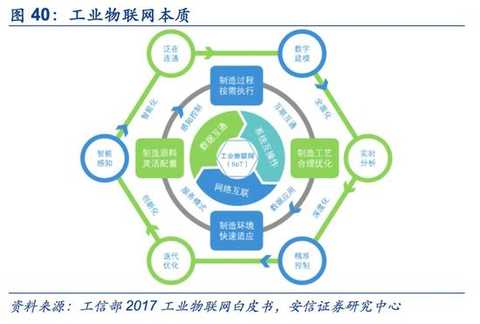
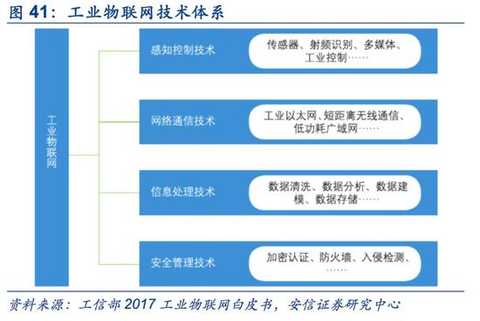
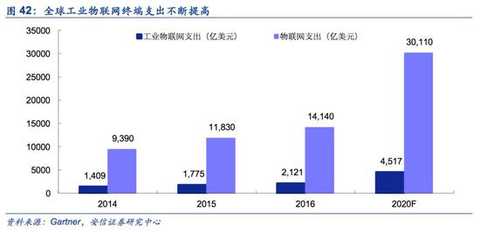

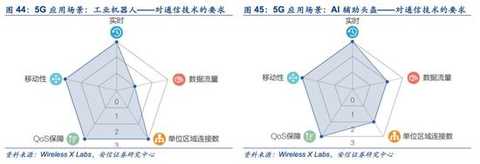
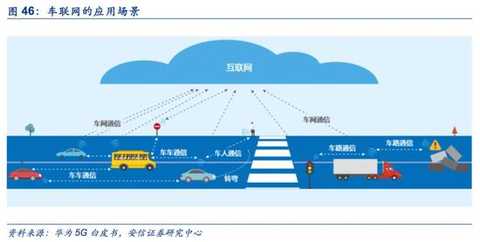


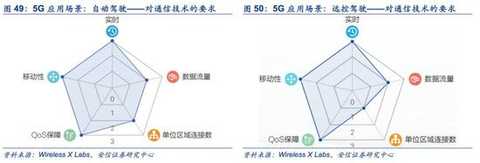


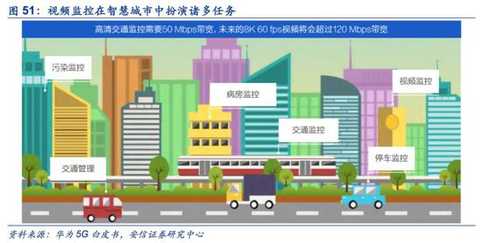

Anxin Strategy: 5G is expected to become the new engine of China's economy